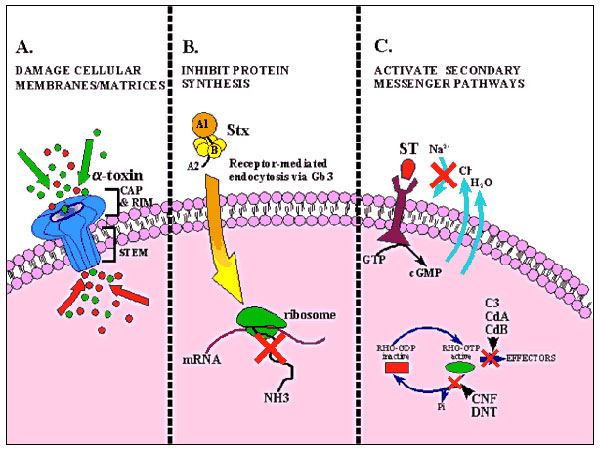Volume 5, Number 2—April 1999
Synopsis
Bacterial Toxins: Friends or Foes?
Figure 1

Figure 1. Diagrammatic representation of the mode of action of several bacterial toxins. A. Damage to cellular membranes by Staphylococcus aureus α-toxin. After binding and oligomerization, the stem of the mushroom-shaped α-toxin heptamer inserts into the target cell and disrupts membrane permeability as depicted by the influx and efflux of ions represented by red and green circles. B. Inhibition of protein synthesis by Shiga toxins (Stx). Holotoxin, which consists of an enzymatically active (A) subunit and five binding (B) subunits, enters cells through the globotriasylceramide (Gb3) receptor. The N-glycosidase activity of the A subunit then cleaves an adenosine residue from 28S ribosomal RNA, which halts protein synthesis. C. Examples of bacterial toxins that activate secondary messenger pathways. Binding of the heat-stable enterotoxins (ST) to a guanylate cyclase receptor results in an increase in cyclic GMP (cGMP) that adversely effects electrolyte flux. By ADP-ribosylation or glucosylation respectively, the C3 exoenzyme (C3) of Clostridium botulinum and the Clostridium difficile toxins A and B (CdA & CdB) inactivate the small Rho GTP-binding proteins. Cytotoxic necrotizing factor (CNF) of E. coli and the dermonecrotic toxin (DNT) of Bordetella species activate Rho by deamidation.